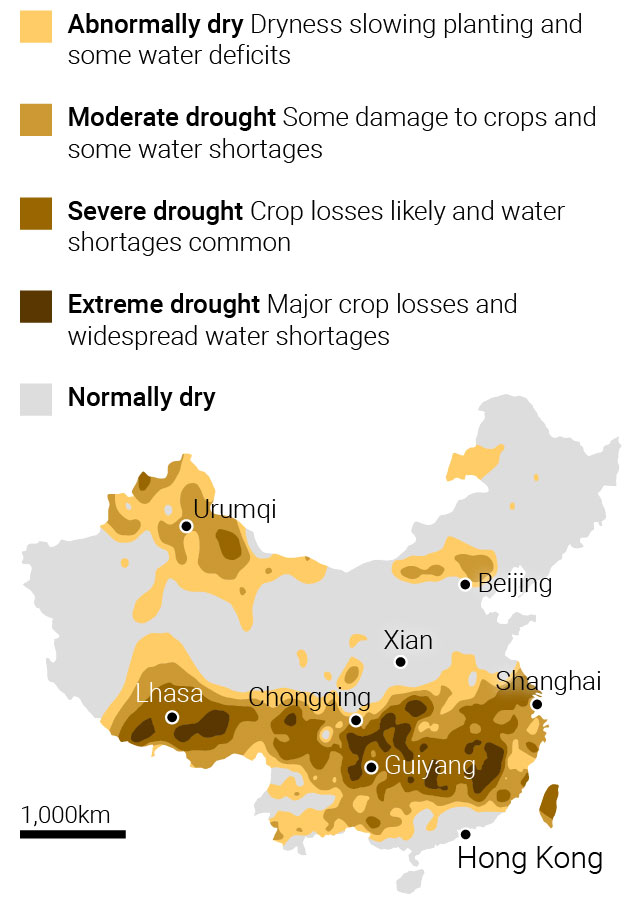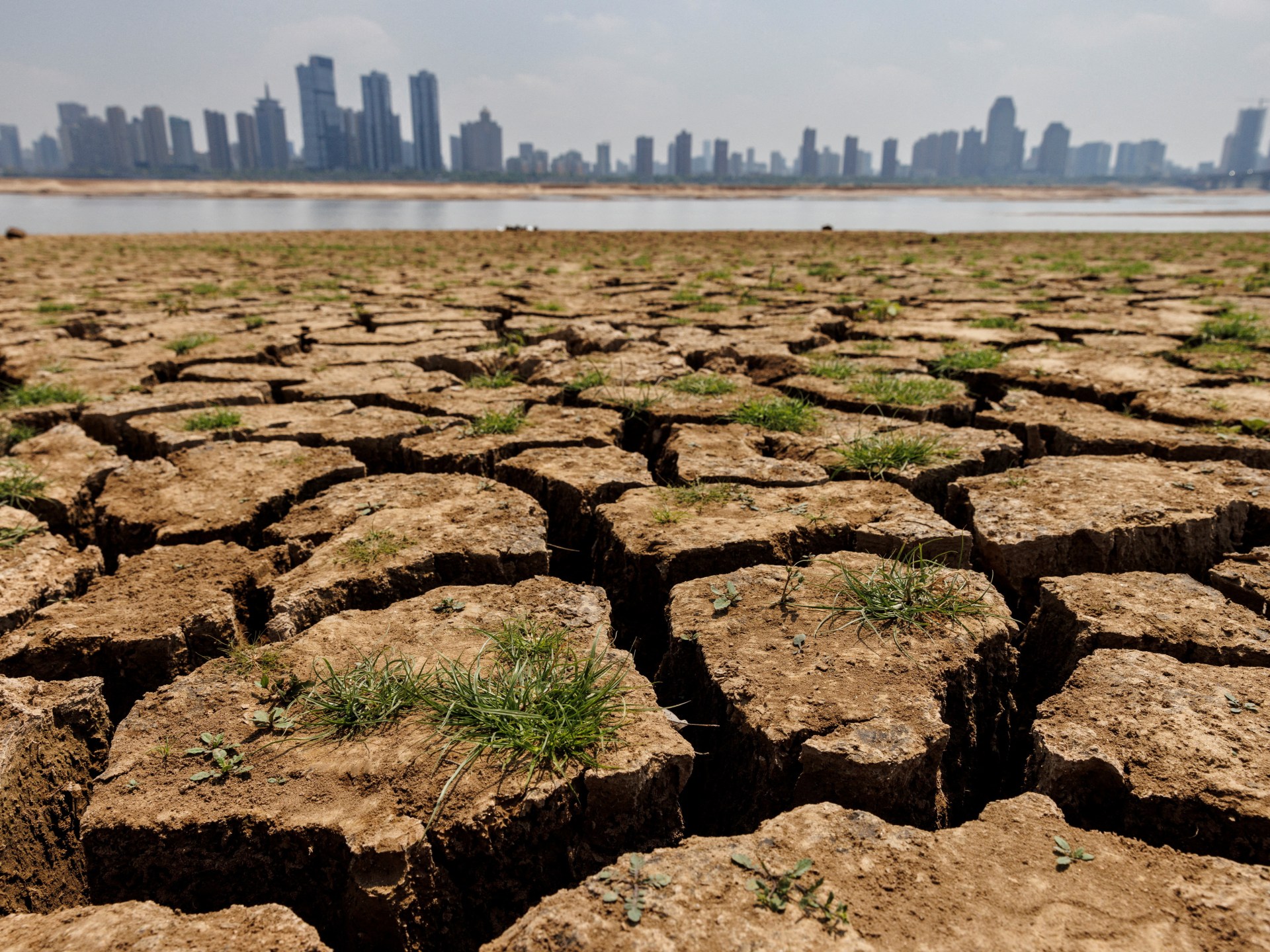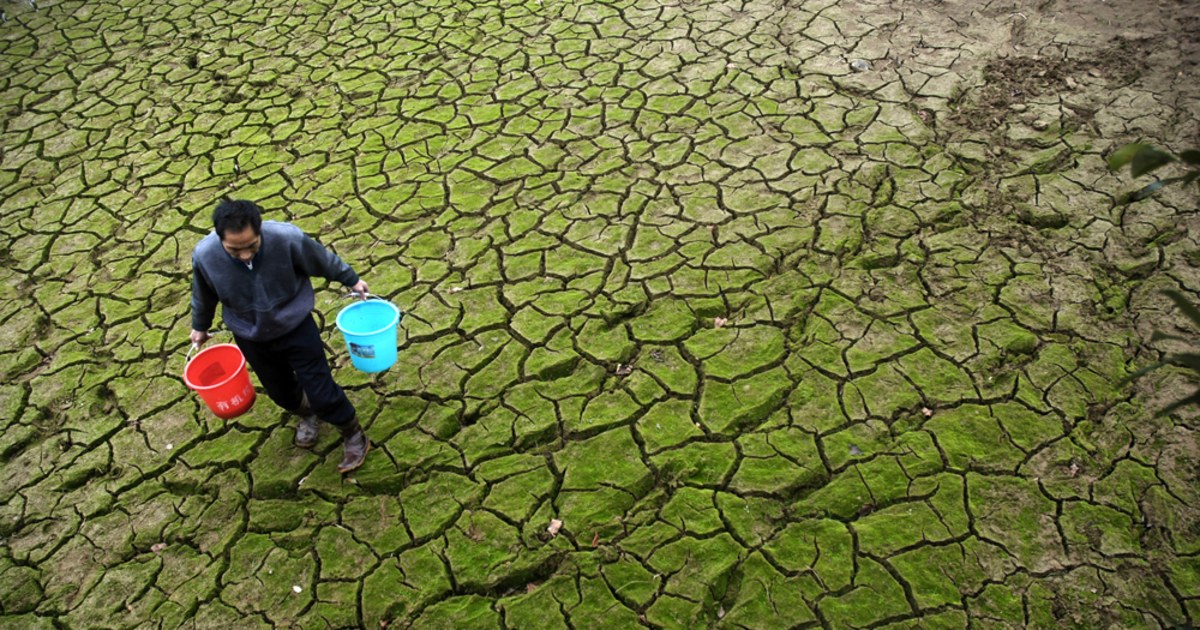China’s Drought Landscape in 2024: A Visual Guide to Understanding a Complex Challenge
Related Articles: China’s Drought Landscape in 2024: A Visual Guide to Understanding a Complex Challenge
Introduction
With enthusiasm, let’s navigate through the intriguing topic related to China’s Drought Landscape in 2024: A Visual Guide to Understanding a Complex Challenge. Let’s weave interesting information and offer fresh perspectives to the readers.
Table of Content
China’s Drought Landscape in 2024: A Visual Guide to Understanding a Complex Challenge

The year 2024 marks another chapter in China’s ongoing struggle with drought, a recurring natural phenomenon that poses significant challenges to the country’s agricultural sector, water resources, and overall economic stability. Understanding the spatial distribution and severity of drought across China is crucial for effective water management, disaster preparedness, and mitigation efforts.
Visualizing Drought: The Importance of Maps
Drought maps serve as indispensable tools for visualizing the spatial extent and intensity of drought conditions. They provide a clear and concise representation of the affected areas, enabling policymakers, researchers, and the public to grasp the severity of the situation at a glance. These maps are generated using various data sources, including satellite imagery, meteorological data, and ground-based observations.
China’s Drought Map 2024: A Snapshot of the Situation
While a definitive drought map for 2024 is not yet available, the available data and historical trends suggest a potential for significant drought conditions in specific regions. The following aspects are crucial to understanding the current drought situation:
- Regional Variations: Drought conditions are not uniform across China. Some regions, particularly in the north and west, are historically more susceptible to drought due to their arid and semi-arid climates. These regions are likely to experience heightened drought stress in 2024.
- Intensity and Duration: The severity and duration of drought can vary significantly. Some areas might experience short-term, localized droughts, while others might face prolonged and severe drought conditions, impacting water availability for extended periods.
- Impact on Agriculture: Drought has a profound impact on agricultural production, leading to crop failures, reduced yields, and livestock losses. This can have cascading effects on food security, commodity prices, and rural livelihoods.
- Water Scarcity: Drought exacerbates water scarcity, impacting water supply for domestic use, industrial activities, and hydropower generation. This can lead to water rationing, conflicts over water resources, and economic disruptions.
- Environmental Impacts: Drought can have significant environmental consequences, including soil degradation, desertification, and increased wildfire risks.
The Role of Climate Change
Climate change is playing an increasingly significant role in exacerbating drought conditions globally, including in China. Rising temperatures, altered precipitation patterns, and increased evaporation rates contribute to prolonged dry periods and intensified drought events.
Navigating the Challenges: Drought Mitigation Strategies
Addressing drought requires a multi-faceted approach that encompasses:
- Water Conservation: Implementing water-efficient irrigation systems, promoting water-saving technologies, and encouraging responsible water use practices are crucial.
- Infrastructure Development: Investing in water storage infrastructure, such as reservoirs and dams, can help buffer against drought impacts by providing a reliable water supply during dry periods.
- Early Warning Systems: Developing robust early warning systems to monitor drought conditions and provide timely alerts can enable proactive mitigation measures.
- Disaster Preparedness: Establishing comprehensive disaster preparedness plans, including drought contingency measures, is essential to minimize the impact of drought events.
- Climate Adaptation: Implementing climate adaptation strategies, such as drought-resistant crop varieties and water-efficient agriculture practices, is crucial to building resilience against future drought events.
FAQs
Q1: How is the drought map created?
A: Drought maps are created using a combination of data sources, including:
- Satellite Imagery: Satellites provide valuable data on vegetation health, soil moisture, and precipitation patterns, which are crucial for assessing drought conditions.
- Meteorological Data: Weather stations and meteorological networks provide data on temperature, precipitation, and other climate variables.
- Ground-Based Observations: Ground-based measurements of soil moisture, water levels, and streamflow provide valuable insights into local drought conditions.
Q2: How does the drought map help us understand the situation?
A: Drought maps provide a visual representation of the spatial extent and severity of drought, enabling us to:
- Identify affected areas: The map clearly shows the regions experiencing drought, allowing for targeted interventions.
- Assess severity: The map indicates the intensity of drought, enabling us to prioritize responses based on the level of impact.
- Monitor changes over time: By comparing maps from different periods, we can track the progression of drought and assess the effectiveness of mitigation measures.
Q3: What are the benefits of using a drought map?
A: Drought maps offer significant benefits, including:
- Improved water management: Maps provide insights into water availability and demand, enabling efficient water allocation and resource management.
- Enhanced disaster preparedness: Maps help identify vulnerable areas and predict potential impacts, enabling proactive planning for drought mitigation.
- Effective policymaking: Maps provide evidence-based information for policymakers to develop effective drought-related policies and strategies.
Q4: How can the public use drought maps?
A: The public can use drought maps to:
- Stay informed about drought conditions: Maps provide a clear understanding of the current drought situation in their region.
- Adopt water conservation measures: Awareness of drought severity encourages individuals to adopt water-saving practices at home and in their communities.
- Support drought relief efforts: Maps can help identify areas in need of assistance, encouraging public support for drought relief initiatives.
Tips for Using Drought Maps
- Understand the data sources: Familiarize yourself with the data sources used to create the map and the limitations of the data.
- Interpret the map symbols: Understand the meaning of different colors and symbols used on the map to represent drought severity.
- Consider the map’s scale: Be aware of the spatial resolution of the map and its relevance to your specific area of interest.
- Use maps in conjunction with other data: Combine drought maps with other relevant data sources, such as agricultural statistics, water resource information, and economic indicators, for a comprehensive understanding.
Conclusion
Drought maps are essential tools for understanding and responding to drought conditions in China. By visualizing the spatial distribution and severity of drought, these maps provide valuable insights for water management, disaster preparedness, and policymaking. As climate change intensifies drought risks, the role of drought maps in guiding effective mitigation strategies and building resilience becomes increasingly crucial. Utilizing these maps effectively can help China navigate the challenges of drought and ensure a sustainable future for its people and environment.








Closure
Thus, we hope this article has provided valuable insights into China’s Drought Landscape in 2024: A Visual Guide to Understanding a Complex Challenge. We hope you find this article informative and beneficial. See you in our next article!